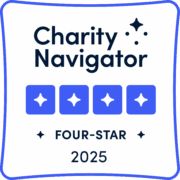The mission of Chelsea’s Hope is to improve the lives of those affected by Lafora disease and help accelerate the development of treatments.
Chelsea’s Hope Lafora Children Research Fund is an IRS 501(c)3 non-profit organization. EIN: 27-1008382
![]() Chelsea’s Hope c/o Dr. Donohue
Chelsea’s Hope c/o Dr. Donohue
976 Maywick Dr.
Lexington, KY 40504


Interested in a Sibling Support Group?
/by Christine KellyChelsea’s Hope is delighted to announce the relaunch of our sibling support group, led by Mariah Merriam, to build community between siblings of those with Lafora Disease.
Are you the sibling of someone with Lafora Disease? We encourage you to fill out the interest form and download this flyer with all the details about what to expect from the program.
Mariah founded the group with the intention of providing emotional support and resources for siblings of Lafora Disease patients. She wrote:
Are you interested?
We need to know how many people to expect in the group as we plan. The first step is to please fill out the interest form. Mariah will contact you and add you to a group chat. Next, you can meet her in a low-stress, informal environment before deciding if you’d like to join the Zoom meeting with others. The primary language for the group sessions will be English, but everyone is welcome! We will have a chat with translation capabilities and will do everything we can so language is not a barrier to participation. Also, you can email Mariah with any questions about the group.
Watch a video explaining the Sibling Support Group.
Please note: The program is only for Lafora Disease siblings. You must be age 13+. Parents are welcome to fill out the interest form on behalf of their children.
FACE it Campaign
/by Riley HawkinsOn September 20th, 2023, Chelsea’s Hope will be joining Childhood Dementia Initiative in the FACE It campaign! September 20th is Childhood Dementia Day, meaning it’s the perfect opportunity to make childhood dementia Impossible To Ignore. We invite you to join by painting your face or having fun with make up. Together, we’ll draw attention to childhood dementia.
One of the most pressing issues regarding childhood dementia is that many people don’t know that it exists. It is a symptom of Lafora disease that eventually affects every patient, listed with others on our About Lafora Disease page. Childhood dementia affects an estimated 700,000 people, and sadly, most children with dementia pass away before their 18th birthday.
In the rare disease community, opportunities to share with friends, acquaintances, and peers outside of the community can be crucial. According to Dementia Australia, childhood dementia is caused by more than 100 different rare genetic conditions.
Spreading awareness helps families, researchers, and medical professionals in supporting patients and developing a cure.
Check out the Chelsea’s Hope social media accounts on September 20th, a.k.a. Childhood Dementia Day; we’ll share photos of us FACING it to raise awareness. Learn more about the FACE It campaign on Childhood Dementia Initiative’s web page.
Lafora Disease Therapeutic Overview
/by Christine KellyWe invite you to watch a video and read a page about the Lafora Disease Therapeutic Overview as of August 2023.
Are you wondering if there are future therapy options for Lafora Disease? Also, what treatments are in progress?
At last week’s event, Ask the Experts: A Q&A for Lafora Families, Chelsea’s Hope Science Director, Dr. Kit Donohue, shared an overview of treatment options in the pipeline. We are happy to share a short recording from the Q&A, as well as a PDF page with information from the presentation slideshow.
If you registered for the event, we’ve already sent you the full recording and handout. Make sure to check your email!
Watch Lafora Disease Therapeutic Overview on YouTube
We hope the Q&A was informative and that participants could get their questions answered. Our team will work on creating handouts on Lafora Disease stages and on the importance of testing siblings of Lafora Disease patients. Please let us know if there are other resources we can provide to help you navigate living with Lafora.
Finally, Chelsea’s Hope is grateful for any volunteer who can translate materials from English to other languages. We encourage you to fill out the volunteer interest form if you can assist us.
Access the Lafora Disease Therapeutic Overview video captions in English HERE.
Access the transcript in Italian HERE.
Please email Dr. Donohue if you have any follow-up questions from the Q&A.
Childhood Dementia Webinars
/by Christine KellyOur friends at Childhood Dementia Initiative are hosting three childhood dementia webinars we want to let you know about!
1. Childhood Dementia Introduction
Tuesday, 5th September 2023 from 10:30 – 11:30 pm EST
2. Accessing Emerging Treatments for Childhood Dementia
Thursday, 7th September from 6 – 6:45 pm EST
3. We Don’t Fit Report
Tuesday, 10th October from 9:30 – 10:30 pm EST
Why attend?
Dementia is one of many symptoms of Lafora Disease. These free webinars could benefit families and caregivers, though healthcare providers, researchers, and advocates who attend could better understand childhood dementia.
Please note: Childhood Dementia Initiative is located in Australia, but the events automatically show up in your timezone when you view the session details. We know the last webinar will conflict with our 2023 Lafora Disease Science Symposium, but wanted to pass along the information if you are signed up to get virtual recordings of the Symposium and available on October 10 to learn about CDI’s report.